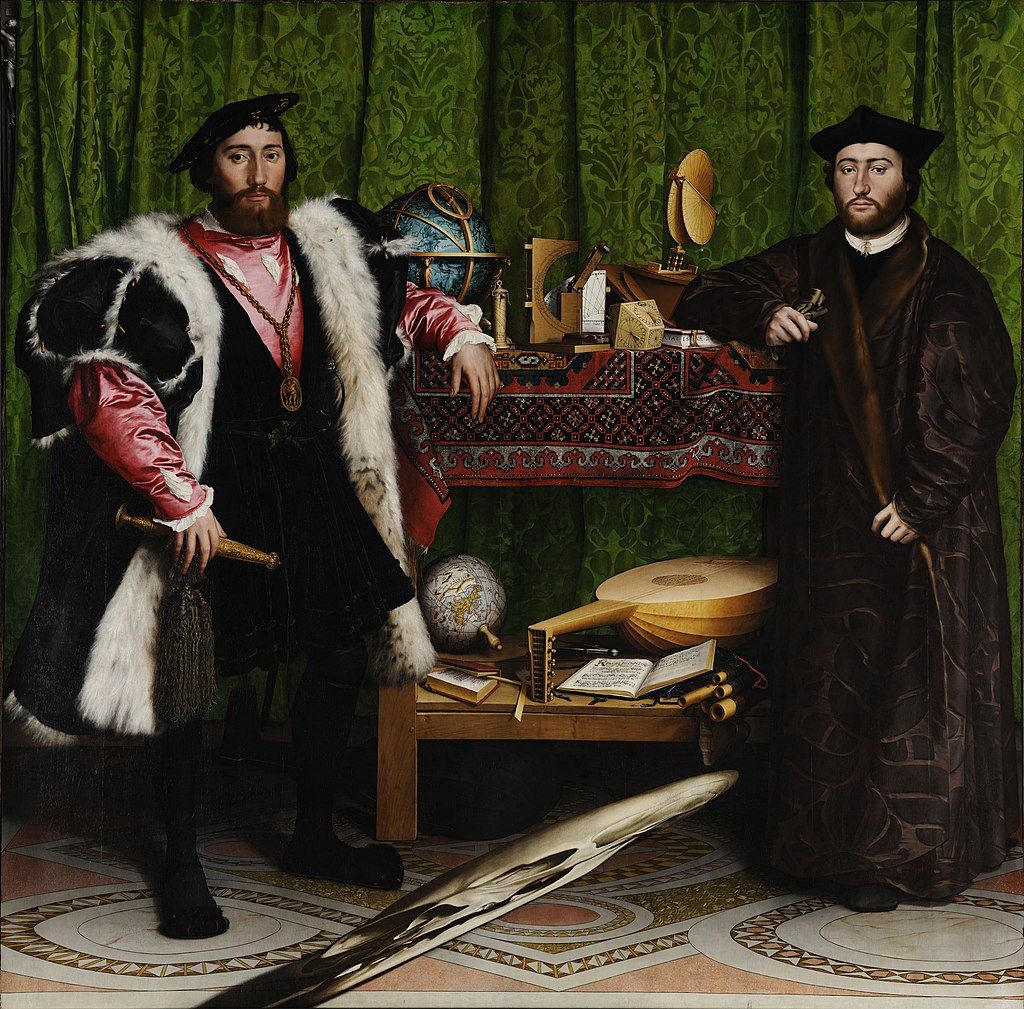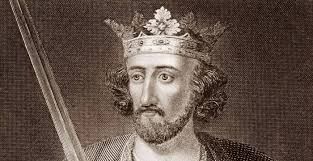
During the high and late Middle Ages the majority of strangers in London were individual members of a multi-national merchant class. In 1303, Edward I had signed the Carta Mercatoria (Charter of the Merchants), an agreement in which rights were granted to foreign merchants in return for dues and levies. Under its terms overseas traders were free to come and go, import and export. They were exempted from tolls and allowed to enforce contracts or settle disputes. Free trading was inevitably accompanied by freedom of movement.
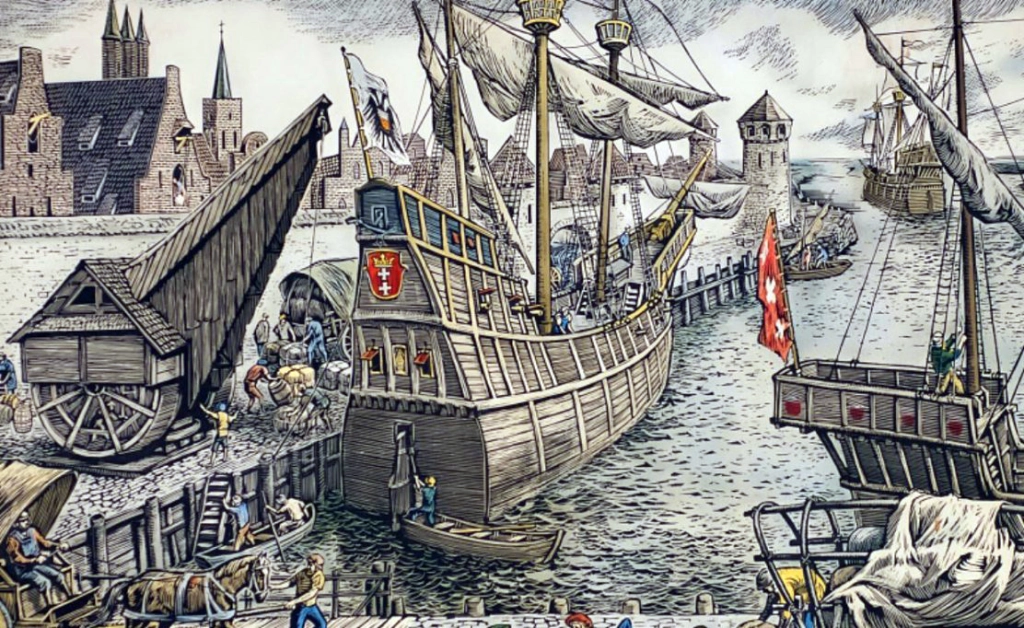
Although attempts were made to regulate migration, many strangers settled in London and were able to run their enterprises without too many obstacles. In 1334, in exchange for financial assistance, Edward III replaced the general accord of rights to foreign merchants with a charter specifically tailored the needs of the powerful Hanseatic League. In its heyday, some seventy cities were regular members of this trading block (an early European Union) and around one hundred more acted as passive associates without decision-making power. Representatives met on a regular basis to strike trading agreements or resolve issues of common (often political) interest. Many of contemporary notions of commerce, economic association, free trade, were formulated during the League’s existence.
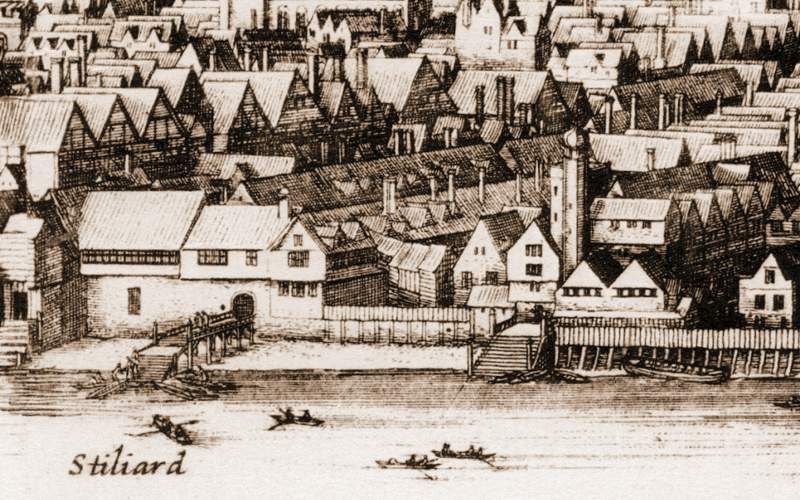
Its London branch occupied a walled area on the north bank of the Thames, just south of London Bridge, now known as Cannon Street. Called the Steelyard or ‘Stalhof’, it was in effect a separate community, independent of the City of London, and governed by its own code of laws. The name referred to either the great steel beam used for weighing goods, or to the extensive courtyard where products were traded from stalls. The yard was not dissolved until the German cities of Lübeck, Bremen, and Hamburg sold their common property in 1853.
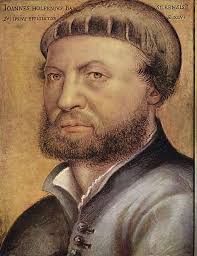
Hans Holbein the younger was born in 1497/8 in Augsburg. His father had settled in that city in 1494 and both his sons Ambrosius and Hans were employed in his workshop where he produced large altarpieces. By 1515 Hans and his brother appear to have migrated to Basel. This date is established by the survival of a copy of Erasmus’s Praise of Folly, in which the margins are illustrated in pen and ink by the young Holbein. Hans was active in the city not only as a painter of portraits and religious imagery, but also as a designer of woodcuts, engravings, and stained glass. Holbein’s earliest surviving dated paintings are the portraits of Jacob Meyer, ‘burgomeister’ of Basel, and that of his wife, both painted in 1516. He was appointed town painter in 1518/19. He may have painted relatively few portraits at the time, but the images he produced of his friend Desiderius Erasmus in 1523 were prove of his prodigious talent.
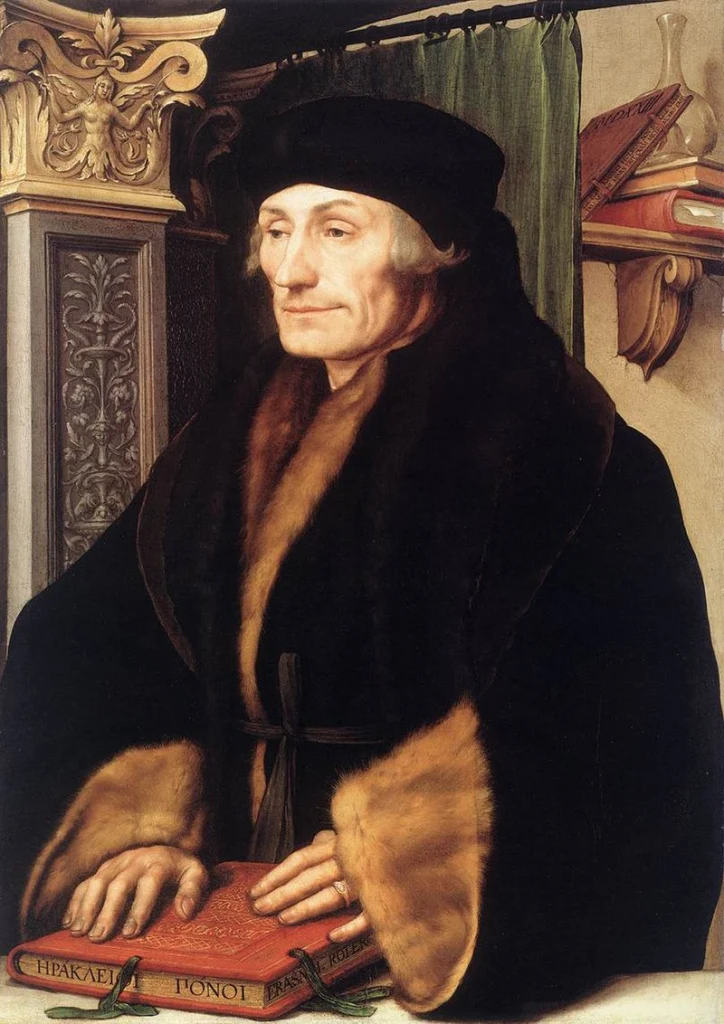
The lure of a lucrative Royal post tempted Holbein to travel to England in 1526. Erasmus had many close contacts there and they helped him to find patronage. His arrival effectively brought Renaissance painting from the Continent to England. He was commissioned to paint a series of portraits, including those of clergyman William Warham (patron of Erasmus), astronomer Nikolaus Kratzer (depicted as an instrument maker surrounded by rulers, compasses, and sundials), and that of his own patron, Thomas More.
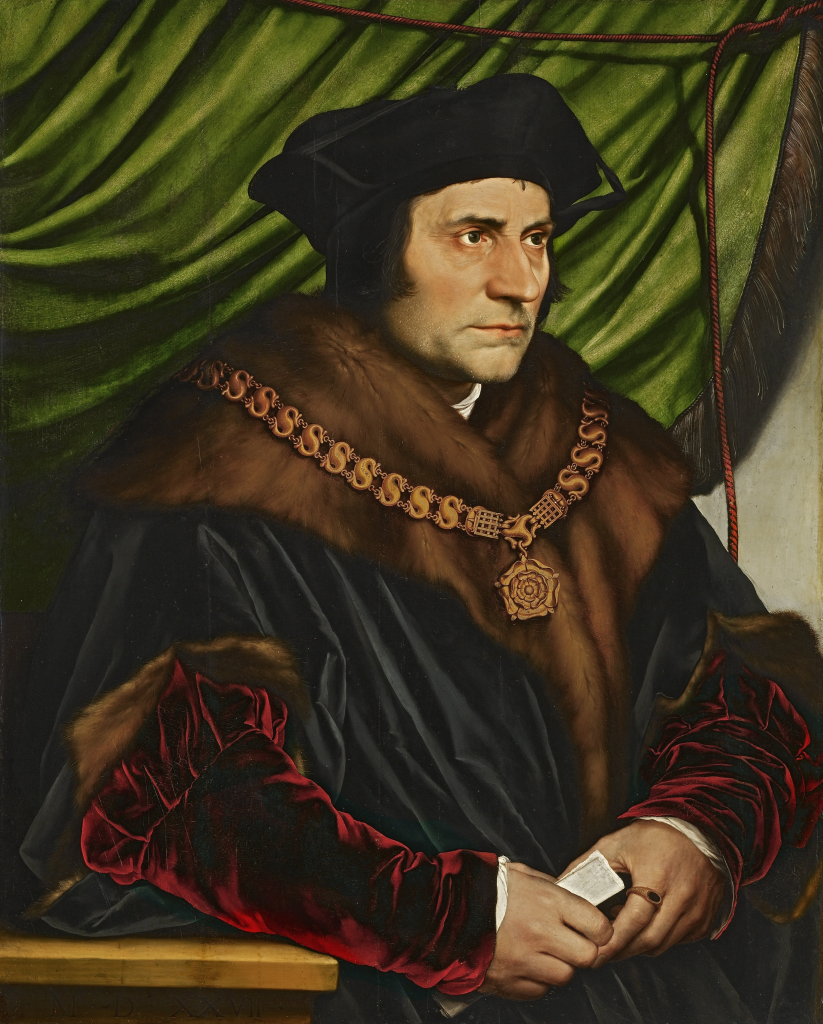
Holbein’s first visit to England lasted only two years. He left London in 1528 for Basel, but the violent upheavals of the Reformation encouraged a swift return to in 1531/2. He stayed in London until his death in 1543. These were turbulent years in England too, both politically and socially. During Holbein’s second spell in England, Thomas More resigned from office. Unable to depend on More’s influence to obtain commissions, he found employment amongst fellow countrymen, the German business community in London. Holbein created eight portraits of Steelyard merchants.
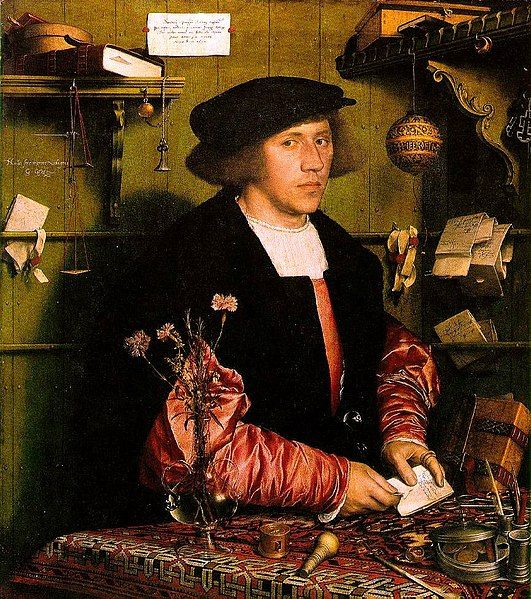
The first of those was a portrait commissioned by Georg Giese, titled ‘Der Kaufmann Georg Gisze’ (1532). This detailed composition may have been intended as a show piece to elicit further Steelyard commissions. A plaque depicted over the sitter’s head identifies him as a person and states his age. He is holding a letter he had received from his brother, written in Middle Low German. Holbein’s next portrait was probably that of Hans of Antwerp, dated 26 July 1532. This sitter resided in London from 1515 to as late as 1547 and was married to an English woman. He was employed as a jeweller by Thomas Cromwell and associated with the London Steelyard, combining the activities of goldsmith and merchant.
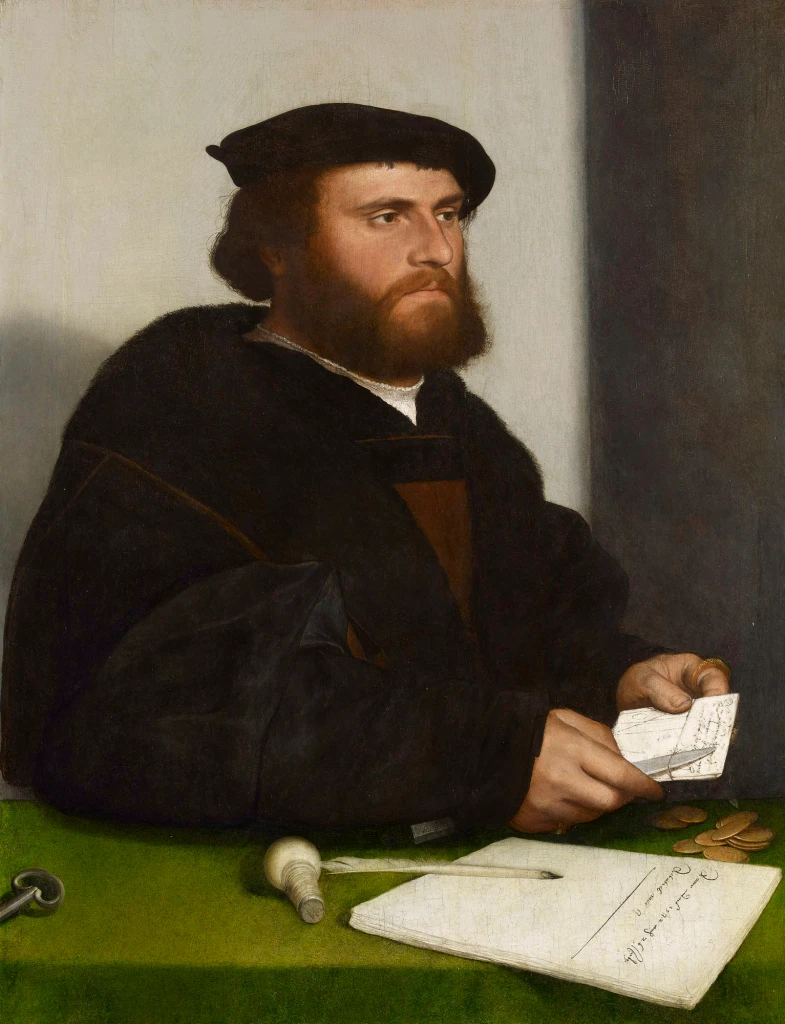
Holbein’s talent became widely recognised and appreciated. As a dedicated patron of the arts, Henry VIII appoint him as court painter in 1536. Thereafter, he devoted most of his time to Royal commissions. He is known to have been living in the parish of St Andrew Undershaft in Aldgate in 1541 and there is no evidence to suggest that he ever worked at Whitehall Palace. In addition to his role as painter to Henry VIII, Holbein created the portraits of many of the King’s courtiers, as well as those of other prominent figures living in London. A number of painted portraits survive, mostly unsigned. In addition, the Royal Collection at Windsor Castle holds over eighty of preparatory portrait drawings. Holbein’s portraits and drawings provide an unrivalled depiction of the Tudor court and includes a striking image of Henry VIII.
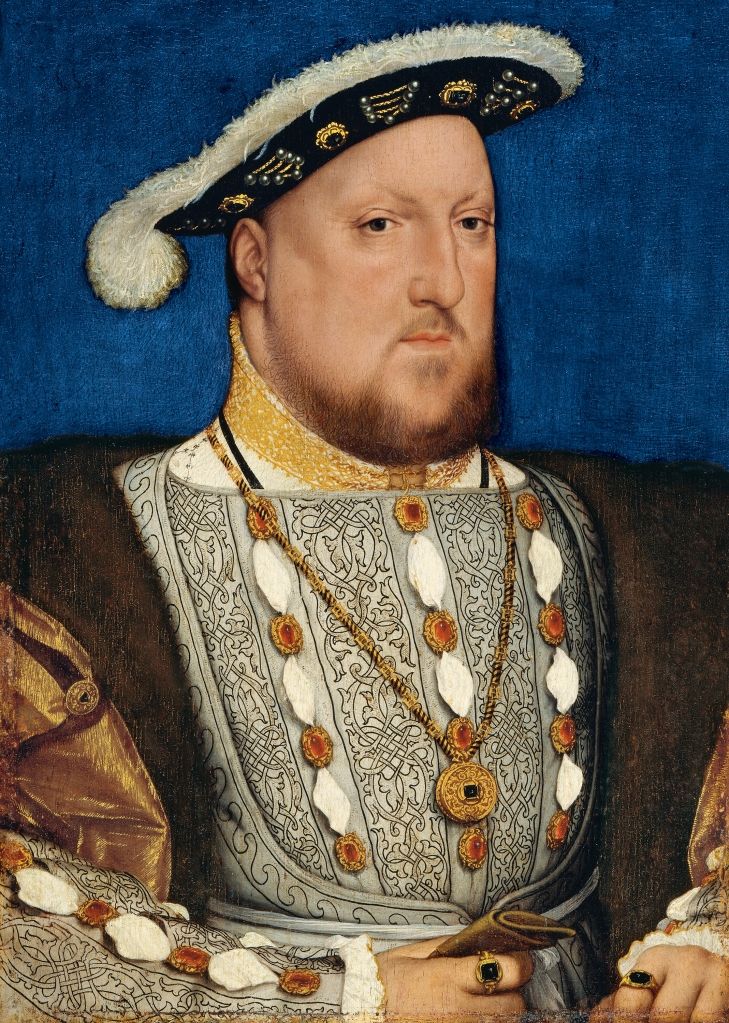
During Holbein’s stay in London the nature of immigration was changing. The Steelyard community had been a class of powerful merchants, influential but aloof, rich but reclusive. Members were welcomed in high society, but did not mix with Londoners in their day to day business. In the course of the century, immigration moved on from a transient presence of rich merchants to the permanent settlement of an artisan class whose members descended from the Low Countries in particular. This change brought about economic benefits to London and the Southeast, but the presence of a large number of strangers also created tension and outbreaks of anti-alien violence. As far as immigration is concerned, Holbein’s portraits represent an earlier period and a more static state of affairs in the capital.
